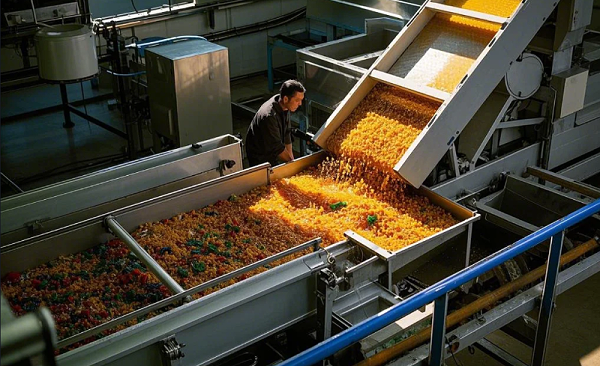Introduction to Waste Plastic Cleaning Products
Waste plastic cleaning has become a critical process in the recycling industry, addressing the growing environmental concerns posed by plastic waste. Efficient cleaning of used plastics not only improves the quality of recycled materials but also
enhances the sustainability of the recycling process. This article explores the characteristics of waste plastic cleaning products and their importance in the recycling ecosystem.
**The Necessity of Waste Plastic Cleaning**

Proper cleaning of waste plastics is essential to ensure the removal of contaminants such as dirt, oil, food residues, and other impurities. These contaminants can significantly reduce the quality of recycled plastic products, making them unsuitable
for high-value applications. Effective cleaning processes help to:
1. **Improve Recycled Plastic Quality**: Clean plastics result in higher-quality recycled materials, which can be used in more demanding applications where strength and aesthetics are critical.
2. **Enhance Process Efficiency**: Clean plastics
reduce the wear on processing equipment, minimizing maintenance costs and downtime.
3. **Environmental Compliance**: Proper cleaning ensures compliance with environmental regulations by reducing the release of pollutants during the recycling process.
**Types of Waste Plastic Cleaning Products**
Waste plastic cleaning products can be categorized based on their application and the types of plastics they are designed to clean. Common products include:
1. **Detergents and Surfactants**: Specially formulated to remove organic contaminants and oils from plastic surfaces. These products often contain biodegradable ingredients to minimize environmental impact.
2. **Mechanical Cleaning Equipment**:
Machinery such as washing units, friction washers, and hydrocyclones that physically remove contaminants from plastic waste. These offer high efficiency in cleaning large volumes of plastic.
3. **Chemical Cleaners**: Solutions designed to dissolve
specific contaminants that are otherwise difficult to remove through mechanical means. They are used for deep cleaning tasks and are often tailored to the type of plastic being processed.
4. **Biological Cleaners**: Enzyme-based cleaners that break
down organic residues on plastics. These are environmentally friendly options that harness natural processes for effective cleaning.
**Key Characteristics of Waste Plastic Cleaning Products**
Waste plastic cleaning products are characterized by several properties that influence their effectiveness and suitability for different types of plastic waste. Key characteristics include:
1. **Cleaning Efficiency**: The ability of the product to remove contaminants effectively. This is often measured by the reduction in impurity levels on the plastic surface.
2. **Compatibility with Plastics**: The product's suitability for
different types of plastics such as PET, HDPE, LDPE, PP, and others. Compatibility ensures that the cleaning agent does not degrade or damage the plastic material.
3. **Environmental Impact**: The biodegradability and toxicity of the cleaning product.
Environmentally friendly cleaning agents are preferred to minimize ecological footprint and regulatory compliance issues.
4. **Economic Viability**: Cost-effectiveness in terms of price, ease of use, and scalability. Products that offer high performance
at lower costs are more desirable for large-scale recycling operations.
5. **Residue Formation**: The extent to which the cleaning product leaves residues on the plastic surface. Low-residue products are preferred to avoid additional rinsing steps
and potential contamination of recycled plastics.
**Innovations in Waste Plastic Cleaning**
Recent innovations have led to the development of advanced waste plastic cleaning products and technologies. These advancements aim to improve efficiency, reduce environmental impact, and enhance the quality of recycled plastics.
1. **Ultrasonic Cleaning**: Utilizing ultrasonic waves to enhance the cleaning process. Ultrasonic cleaning increases the removal of stubborn contaminants through cavitation—creating high-pressure bubbles that implode on the plastic surface.
2. **Advanced Surfactants**: Development of more effective and environmentally friendly surfactants that provide superior cleaning while being biodegradable and non-toxic.
3. **Automated Cleaning Systems**: Integration of artificial intelligence
and robotics in cleaning systems to optimize the cleaning process. Automated systems can adjust parameters in real-time to ensure consistent performance.
4. **Enzyme-based Cleaners**: Use of tailored enzymes to break down specific contaminants.
Enzyme cleaners offer a biodegradable, non-toxic solution for difficult-to-remove substances.
5. **Microbial Cleaning Agents**: Employing naturally occurring microorganisms to degrade organic contaminants. This method mimics natural biodegradation
processes, resulting in eco-friendly cleaning.
**Choosing the Right Waste Plastic Cleaning Products**
Selecting the appropriate cleaning products for waste plastics involves considering the type of plastic, nature of contaminants, and specific recycling requirements. Steps to identify the right products include:
1. **Conducting Contaminant Analysis**: Assessing the types and levels of contaminants present on the plastic waste. This information helps in selecting suitable cleaning agents and processes.
2. **Compatibility Testing**: Verifying that
the cleaning product does not harm the plastic and is effective against the targeted contaminants through laboratory testing.
3. **Environmental Considerations**: Evaluating the environmental impact of the cleaning products, including biodegradability
and potential ecological effects.
4. **Cost-Benefit Analysis**: Balancing the cost of cleaning products and equipment with their effectiveness and the quality improvement achieved in the recycled plastic.
5. **Supplier Reliability**: Choosing
reputable suppliers with proven track records and robust technical support for their products.
**Conclusion**
Waste plastic cleaning is a pivotal process in recycling, crucial for producing high-quality recycled plastics and promoting environmental sustainability. By understanding and utilizing effective waste plastic cleaning products, recyclers can achieve
better-quality outputs while adhering to environmental regulations. Continuous innovation in cleaning technologies and products promises to enhance the efficiency and environmental performance of plastic recycling efforts. As the industry evolves, ongoing
research and development will likely yield even more advanced solutions, contributing to a more sustainable circular economy.

